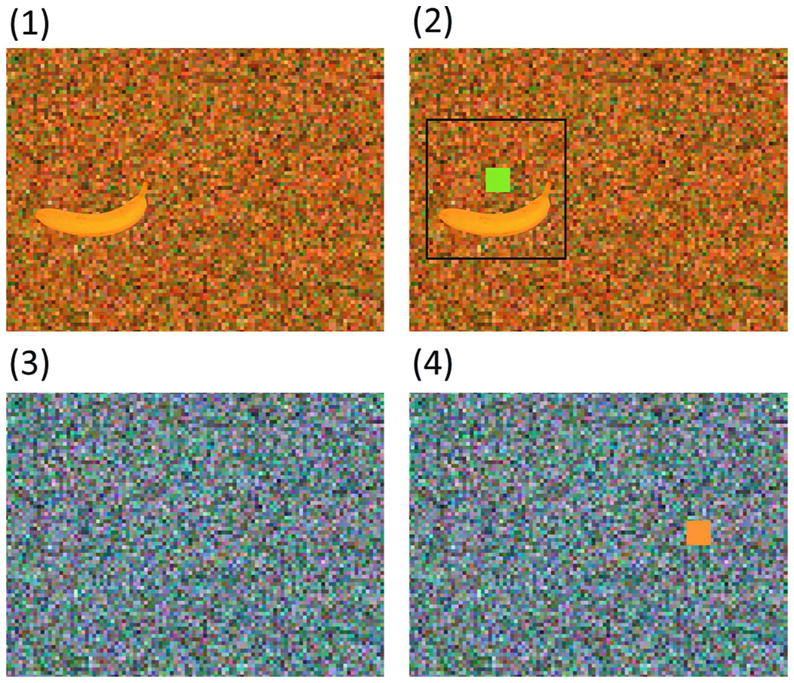Figure 1.

Illustration of task components for successive matches. (1) At the start of a trial, the observer adapted to the reference viewing condition. We call this the adaptation period. On some trials, a banana or a rectangle was presented during the adaptation period and continued to be present during the presentation of the reference patch. (2) After the adaptation period, the reference patch was presented on the left (or right) of the display. Here the reference patch is the green square. A thin black square enclosed the reference patch and any adjacent object/patch, and the observer was encouraged to scan all stimuli within the square. (3) After presentation of the reference patch, the retention interval began. The background could stay constant or could change at the start of the retention interval. In either case, the observer viewed the test background during the retention interval. If the banana or the rectangle had been present, it was removed at the start of the retention interval. (4) Finally, the test patch appeared and the observer adjusted it to match the reference patch.
